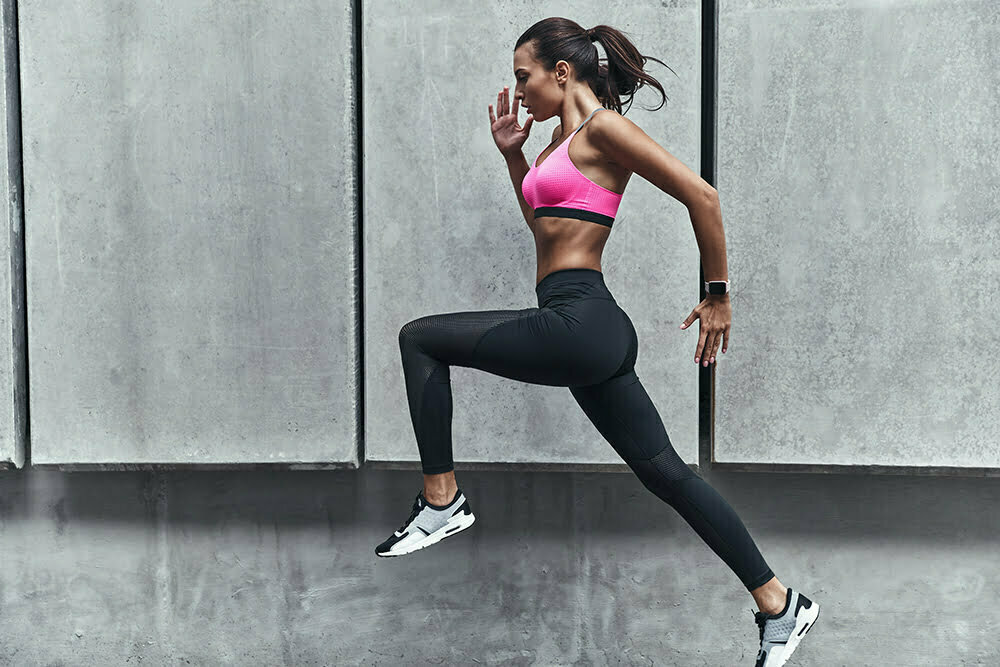How Breast Size Affects Your Exercise Routine (Plus Considerations to Make if You’re Planning to Have Breast Surgery)

When we see female athletes featured in a magazine or competing on TV, we almost always see women with a lean, sculpted physiques and relatively small breasts. As such, it’s often assumed that having small breasts goes along with the “athlete” territory. But, is this true—and if yes, why?
As it turns out, comfort and breast size can have a lot to do with what activities women choose to participate in, and even whether or not they exercise at all. In other words, it seems that highly athletic women may not have small breasts simply because they are athletes—rather they are more likely to participate in sports if they already have small breasts, as their breast size is less likely to interfere with their comfort.
Women in the study with large breasts exercised less on average. Those who did exercise were less likely to participate in high-intensity activities and more likely to be bothered by the weight or size of their breasts. This was true regardless of the participant’s BMI.
When it comes to exercise habits, size does count
We recently came across this fascinating New York Times article that reports on new research into how breast size affects the way women exercise. The article cites a study conducted by biomechanics researchers at the University of Wollongong in Australia, the first of its kind to focus not on how exercise affects the breasts, but on how women feel their breast size affects their exercise habits.
Researchers divided 355 volunteers into four groups based on their breast size (small, medium, large or very large), and interviewed each one about their exercise habits, including how often they exercised, what type of activities they did, and why. Participants were also specifically asked if they felt their breast size influenced their participation in physical activity.
Having very large breasts presents challenges for active women
Women in the study with large breasts exercised less on average. Those who did exercise regularly were less likely to participate in high-intensity activities (such as running), and more likely to be bothered by the weight or size of their breasts during activity. This was true regardless of the participant’s body weight or BMI. Even very thin women with larger breasts exercised less than women with smaller breasts, and were more likely to be bothered by the weight or size of their breasts during activity.
This probably comes as no surprise to those of you who have larger natural or augmented breasts. Without a highly supportive sports bra, the idea of running a 5K or taking a HIIT class may seem out of the question—and as the article notes, finding such a sports bra is key to overcoming the breast size barrier during exercise.
So what does this mean if you are considering cosmetic breast surgery?
If you’re a fit, active woman who’s been considering breast augmentation, learning about this study may give you pause—but there’s no need to worry; in the hands of a skilled plastic surgeon, you can have your cake and eat it too!
For instance, here at The Swan Center, our plastic surgeons are very experienced with breast augmentation for athletes. Our patients include marathon runners, triathletes, CrossFitters, and yogis. For these patients, we’ll typically recommend a more modest size breast implant and focus on improving breast shape (i.e., more fullness at the top, achieving symmetry, better cleavage) to provide an aesthetically pleasing, feminine breast contour without impeding activity.
Of course, a kick-ass sports bra is also a must, and we can help in that department too—many of our staff can speak first hand about the best sports bras for augmented breasts.
On the other hand, if you’re considering breast reduction, the results of this study may be the confirmation you need to move forward with the procedure. And in fact, our Atlanta breast reduction patients often remark on how much exercise has improved for them post-reduction. In some cases, having the surgery allowed them to exercise comfortably for the very first time in years, and their overall health improved as a result.
All in all, we are glad to see more research devoted to women’s health and wellbeing making its way into the headlines. Helping women (and men) feel confident in their bodies is our favorite thing about our work here at The Swan Center.
Do you have thoughts about this research, or perhaps suggestions for sports bras for augmented breasts? Leave a comment below!